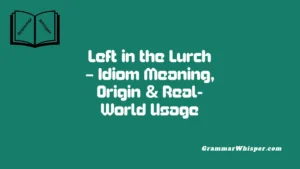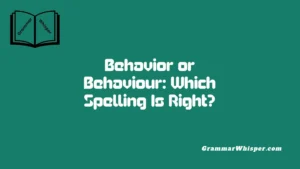The spelling of the word “Jewelry or Jewellery” might appear simple, but it carries a complex, even deceptively tricky weight. This isn’t just a choice about aesthetics; it’s one that catches even seasoned writers, sharp marketers, and savvy shoppers by surprise. I’ve seen firsthand how a minor detail can spark a branding debate, especially during cross-market campaigns. Behind the scenes, editorial and creative teams often face off on this seemingly small point. But in truth, the two forms – “jewelry” and “jewellery” – are not interchangeable. They reflect cultural nuances, signaling different regions, industries, and audience expectations. So if you’re a student, a professional writer, or a brand strategist, your spelling choice says more than you think. It’s not just about grammar; it’s about your understanding of context, usage, and the subtle difference between American and British norms.
This article unpacks the linguistic roots of the term, following its historical shifts and the way the modern language landscape has reshaped its adoption. Personally, learning when to use “jewelry” vs. “jewellery” sharpened my writing voice and improved how I craft content for global clarity. American usage leans toward “jewelry,” while British and Commonwealth culture holds on to “jewellery.” One isn’t inherently better; both are correct in their respective contexts. Ultimately, your choice depends on your audience, the tone, and which market you’re trying to reach.
Jewelry vs. Jewellery: What’s the Difference?
Let’s start with a quick overview:
| Spelling | Region Commonly Used | Example Sentence |
| Jewelry | United States | She designs her own handmade jewelry. |
| Jewellery | UK, Canada, Australia | This British jeweller sells fine jewellery. |
Both spellings refer to ornaments made of precious metals and stones, such as rings, necklaces, and earrings. The difference lies not in meaning, but in regional spelling conventions.
Despite their identical pronunciation (/ˈdʒuːəlri/), their spelling reflects broader linguistic trends rooted in centuries of evolution.
The Origins: Where the Word ‘Jewelry’ Came From
The word “jewelry” has a rich and layered etymology, tracing its sparkle back to the Old French word jouel, meaning plaything or ornament. This itself was derived from the Latin jocale – also meaning a toy or something playful.
From Latin to French to English
- Latin: Jocale – “plaything”
- Old French: Jouel – “jewel”
- Middle English: Juelrye or juelry
By the late Middle Ages, the term “jewel” was well-established in English. The suffix -ry (as in bakery or cookery) turned it into a collective noun, forming “jewelry” – the craft, trade, or collection of jewels.
Why the Spelling Split? American vs. British English
So why do we have “jewelry” in America and “jewellery” elsewhere?
It’s all about language evolution – and a few powerful dictionaries.
British English and the Influence of Samuel Johnson
In 1755, Samuel Johnson, the towering figure of British lexicography, published A Dictionary of the English Language. Johnson aimed to preserve and codify English spelling – often favoring forms closer to French and Latin origins.
That’s why British English retained:
- Honour instead of honor
- Theatre instead of theater
- Jewellery instead of jewelry
The double “l” and “-ery” suffix reflect that classical elegance Johnson valued.
American English and Noah Webster’s Language Reforms
In the early 19th century, American lexicographer Noah Webster sought to simplify English for the new American identity. His spelling reforms had a strong influence on American education and publishing.
He dropped what he saw as unnecessary letters:
- Colour → Color
- Centre → Center
- Jewellery → Jewelry
This streamlined spelling was easier to learn and more “American” in tone.
“The American language must be as independent as the American government.” – Noah Webster
Thus, the “jewelry” spelling became standard in the United States, while “jewellery” remained favored in the UK and its former colonies.
Global Spelling Patterns of Jewelry
Despite globalization, regional spelling preferences remain strong – especially in English-speaking countries. Here’s a breakdown of usage by region:
| Country | Preferred Spelling | Notes |
| United States | Jewelry | Standard in education, media, commerce |
| United Kingdom | Jewellery | Found in literature, government, branding |
| Canada | Jewellery | Follows British English spelling conventions |
| Australia | Jewellery | British-influenced, though some US influence exists |
| India | Jewellery | British spelling due to colonial legacy |
| South Africa | Jewellery | Another former British colony with UK spelling |
Google Trends Snapshot
Data from Google Trends confirms this divide:
- In the US, “jewelry” outpaces “jewellery” by over 90%.
- In the UK, “jewellery” dominates searches.
- In Canada, both versions appear, but “jewellery” is slightly ahead.
Jewelry in Branding and Marketing
The choice between “jewelry” and “jewellery” isn’t just grammatical – it’s strategic.
American Brands
- Tiffany & Co.
- Kay Jewelers
- Zales
These brands use “jewelry” in everything from logos to product descriptions, aligning with American spelling norms.
British & Commonwealth Brands
- Boodles (UK): Luxury jewellery
- Swarovski (Global but EU-based): Adapts spelling based on region
- Tanishq (India): Consistently uses jewellery
The spelling of “jewelry” vs. “jewellery” in branding reflects target demographics, geographic reach, and cultural identity.
Jewelry in Literature and Media
Spelling variation also shows up in books, movies, and journalism. Let’s look at examples:
British Literature Using “Jewellery”
- “She adorned herself with the finest jewellery the house could offer.” – Jane Austen
- “The thief had taken only the jewellery, ignoring the coins.” – Agatha Christie
American Fiction Using “Jewelry”
- “She opened the box and found the jewelry missing.” – Danielle Steel
- “The pawnshop was filled with gaudy jewelry under dusty glass.” – Stephen King
Journalism Style Guides
- The New York Times: jewelry
- The Guardian: jewellery
- The Times of India: jewellery
Each organization chooses spelling based on audience expectations and regional alignment.
Search Engines and Spelling: Jewelry vs. Jewellery SEO
If you’re writing blog content, product descriptions, or ads, spelling matters for search engine optimization.
Key SEO Insights:
- “Jewelry” has higher global monthly search volume (~1.5 million) than “jewellery” (~300,000).
- US-dominant platforms (Amazon, Etsy, Pinterest) primarily use jewelry.
- UK-specific domains and Australian businesses favor jewellery in meta tags and URLs.
Tip: Match your spelling to your audience’s locale. Using both in different sections of your site can help with international SEO – just be consistent within a page.
Is One Spelling More Correct Than the Other?
No. Both are equally valid in their respective dialects.
But here’s a guide to help you choose:
| Context | Recommended Spelling |
| Writing for a US audience | Jewelry |
| Writing for UK, Canada, AU | Jewellery |
| Writing for a global brand | Consider adapting dynamically (geo-targeting) |
| Academic writing | Follow the style guide (APA/MLA/Chicago) |
| Creative writing | Match character/setting tone |
Cultural Significance of Jewelry Beyond Spelling
Regardless of how you spell it, jewelry has always been more than ornamentation.
Historical Symbolism
- Ancient Egypt: Amulets symbolized protection and divine connection.
- Victorian England: Mourning jewellery preserved memories through hair and portraits.
- Indigenous Cultures: Jewelry denotes tribe, status, and spiritual meaning.
Modern Relevance
- Marriage & Rituals: Rings, bangles, and anklets carry meaning across cultures.
- Fashion Statement: High-end designer pieces represent wealth and identity.
- Heirlooms: Passed through generations, jewelry preserves personal history.
The spelling doesn’t change the sentiment – only the linguistic wrapper does.
Final Thoughts
So, jewelry or jewellery? The answer depends on who you’re writing for and where you are in the world.
Think of it like a gem: the cut may differ, but the value remains. Whether you’re reading Shakespeare or Vogue, what matters most is clarity, audience awareness, and authenticity.
Use “jewelry” for your American readers, “jewellery” for your British ones – and always wear your style with pride.
FAQs
What is the correct spelling: Jewelry or Jewellery?
Both are correct depending on the region. “Jewelry” is used in American English, while “Jewellery” is standard in British English and countries like Canada, Australia, and South Africa.
Why does American English use “Jewelry” instead of “Jewellery”?
American spelling was influenced by Noah Webster, who simplified many British English spellings to make them more phonetic. He dropped what he considered unnecessary letters, including the second “l” and “e” in “jewellery.”
Is it wrong to use “Jewellery” in the United States?
It’s not technically wrong, but “jewellery” will look out of place in American writing. For clarity and professionalism, always match the spelling to your audience or region.
Which spelling should I use for international content or SEO?
If you’re targeting a global audience, consider using both spellings strategically based on the reader’s location. For SEO, the US spelling “jewelry” has higher global search volume, but UK audiences will expect “jewellery.”
Do any style guides recommend one spelling over the other?
Yes. Style guides like APA, MLA, and Chicago Manual of Style recommend sticking to American English rules for US publications and British English for UK audiences. Always consult your publication’s preferred style guide when in doubt.











